Mississippi Today
‘This is where it starts’: UMMC summit aims to increase number of Black men in health care
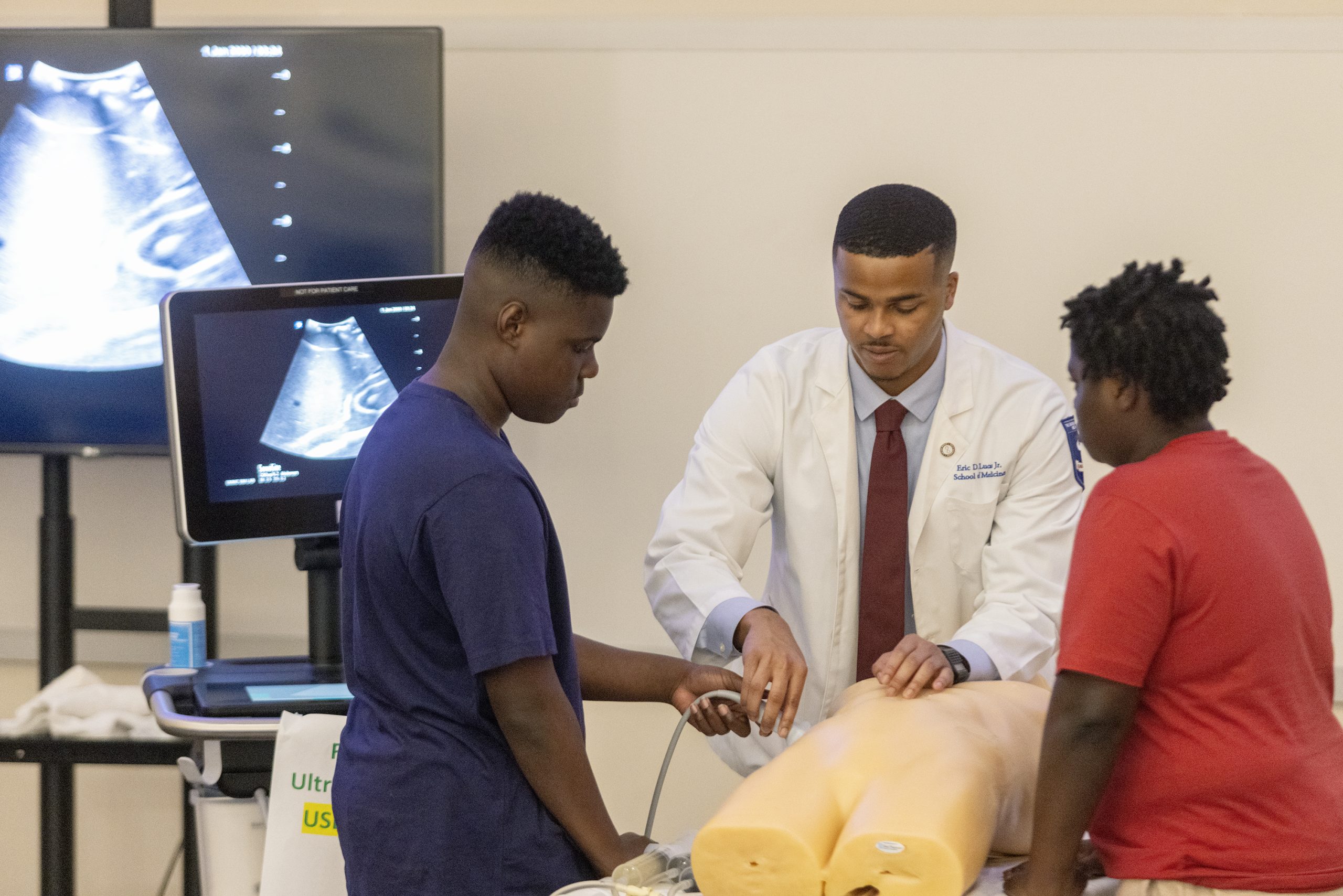
Brielan Terrell sat a few rows behind the other boys in the auditorium at the University of Mississippi Medical Center.
The 18-year-old leaned forward, listening intently, as Eric Lucas Jr., a fourth-year medical student, demonstrated how to perform an ultrasound. As Lucas slid the probe across a medical manikin's chest, he peppered his audience, about 35 young Black men clad in sports coats and bowties, with questions.
“Can anyone tell me what a stable blood pressure is?” he asked.
Terrell raised his hand and answered correctly: “120 over 80.”
Lucas beamed. This was exactly what he imagined three years ago when he came up with the idea for the Black Men in Health Care Empowerment Summit.
The one-day summer program saw its third cohort on Saturday, as over 100 middle and high school students from all over the state visited UMMC for tours and clinical simulations. Aimed at encouraging young Black men to pursue health care careers, Lucas pitched his idea during his first year at UMMC.
“That's how I was raised,” he said. “When you walk through the door, you should help someone to walk in.”
Lucas, a graduate of Mississippi State University and native of Ocean Springs, always had a career in health care in his sights.
He remembers getting a microscope kit for a gift when he was 4.
“Science has always kind of been my thing,” Lucas admitted.
Growing up with a dentist for a mom and a critical care intensivist for a dad, Lucas always knew being a physician was a real career option. But he also knows that's not the case for many Black kids in Mississippi, including some of his medical school classmates.
“One day, we were all hanging out, and I was like, ‘Man, how cool would it have been if we had a summer camp that brought us through all the medical schools and just getting exposed to what it takes?'” Lucas recounted.
“If you don't see it, you're not going to believe it.”
And so the summit was born.
In Mississippi, a state with one of the worst health outcomes for people of color in the country, getting more young Black people involved in health care could make all the difference.
That's why Dr. Demondes Haynes jumped at the opportunity to make Lucas' dream a reality at UMMC.
“Just to let students know that a career in health care is an option,” he said. “Not that everybody that's here today will become a doctor or dentist or a nurse, but we want them to know that it is an option.”
Haynes, associate dean for admissions at UMMC, said the only demographic group that had a decrease in students applying and being admitted to medical school in the past 40 years were Black men.
Less than 6% of doctors in the United States identify as Black or African American, though Black people make up about 12% of the population.
Though it's been shown that, when Black patients are treated by Black doctors, they're happier with their health care and are more likely to get the preventative care they need, one recent study linked the prevalence of Black doctors to longer life expectancy among Black populations for the first time.
Black men have the shortest life expectancy in the country. The potential power of increasing the number of Black men in the health care field is clear.
“We, as a medical center, want to improve the lives of Mississippians overall,” Haynes said. “This is important because we want to invest in students to contribute to Mississippi. So our hope is that some of these will enter the healthcare field and hopefully stay in Mississippi and improve life in Mississippi for all citizens.”
Throughout the morning, Black medical students and doctors led summit participants — including Terrell — through tours, panels and lectures.
As one of the oldest students in attendance, Terrell lagged behind to talk to medical professionals and raised his hand often. The incoming freshman at the University of Southern Mississippi had a lot on his mind.
During downtime of the ultrasound session, Terrell started chatting with Jaharah Muhammad, a third-year medical student, about his interest in pharmacy.
“Are you going to stay in Mississippi?” she asked.
He answered indecisively.
Later, moments before the students filed out of the auditorium and the next group of medical students and doctors would try to open their eyes to the possibilities of a career in health care, Muhammad shared some parting words.
“Consider staying here,” she said. “If you want more people who look like y'all in health care, this is where it starts.”
This article first appeared on Mississippi Today and is republished here under a Creative Commons license.
Mississippi Today
On this day in 1896


MAY 18, 1896
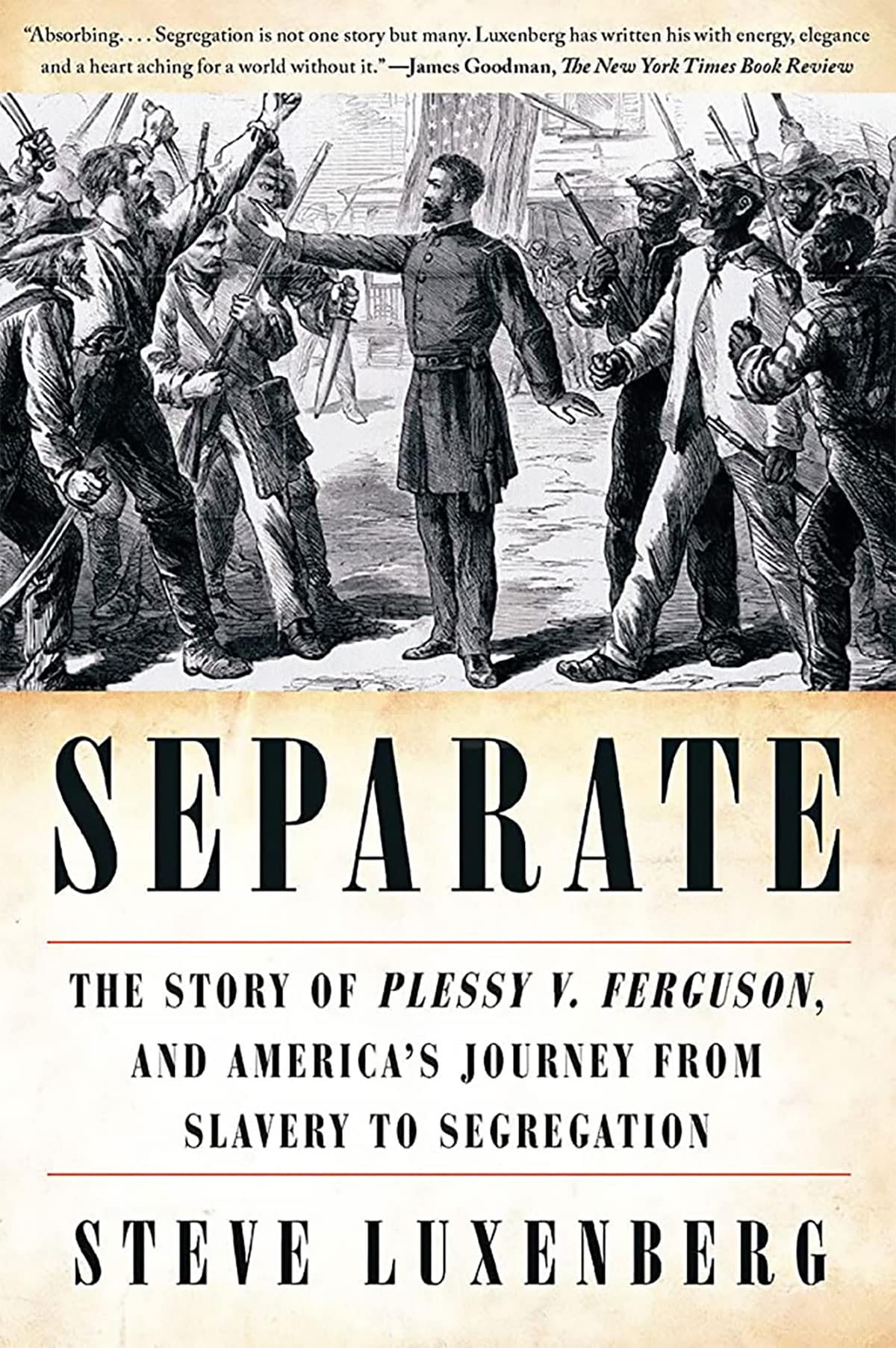
The U.S. Supreme Court ruled 7-1 in Plessy v. Ferguson that racial segregation on railroads or similar public places was constitutional, forging the “separate but equal” doctrine that remained in place until 1954.
In his dissent that would foreshadow the ruling six decades later in Brown v. Board of Education, Justice John Marshall Harlan wrote that “separate but equal” rail cars were aimed at discriminating against Black Americans.
“In the view of the Constitution, in the eye of the law, there is in this country no superior, dominant, ruling class of citizens,” he wrote. “Our Constitution in color-blind and neither knows nor tolerates classes among citizens. In respect of civil rights, all citizens are equal before the law. The humblest is the peer of the most powerful. The law … takes no account of his surroundings or of his color when his civil rights as guaranteed by the supreme law of the land are involved.”
This article first appeared on Mississippi Today and is republished here under a Creative Commons license.
Did you miss our previous article…
https://www.biloxinewsevents.com/?p=359301
Mississippi Today
Renada Stovall, chemist and entrepreneur
Renada Stovall sat on the back deck of her rural Arkansas home one evening, contemplating life when she had a life-altering epiphany…
“I gotta get out of these woods.”
She heard it as clear as lips to her ear and as deep as the trees surrounding her property. Stovall's job as a chemist had taken her all over the country. In addition to Arkansas, there were stints in Atlanta, Dallas and Reno. But she was missing home, her parents and friends. She also knew, she needed something else to do.
“I thought, what kind of business can I start for myself,” said Stovall, as she watered herbs growing in a garden behind her south Jackson home. Some of those herbs are used in her all-natural products. “I know when I lived in Reno, Nevada, where it's very hot and very dry, there really weren't products available that worked for me, my hair, and my skin suffered. I've got a chemistry degree from Spelman College. I took the plunge and decided to create products for myself.”

In 2018, Stovall's venture led to the creation of shea butter moisturizers and natural soaps. But she didn't stop there, and in December 2022, she moved home to Mississippi and got to work, expanding her product line to include body balms and butters, and shampoos infused with avocado and palm, mango butter, coconut and olive oils.
Nadabutter, which incorporates Renada's name, came to fruition.

Stovall sells her balms and moisturizers at what she calls, “pop-up markets,” across the state during the summer. She's available via social media and also creates products depending on what of her ingredients a customer chooses. “My turmeric and honey is really popular,” Stovall added.
“The all-natural ingredients I use are great for conditioning the skin and hair. All of my products make you feel soft and luscious. The shea butter I use comes from West Africa. It's my way of networking and supporting other women. And it's my wish that other women can be inspired to be self-sufficient in starting their own businesses.”





This article first appeared on Mississippi Today and is republished here under a Creative Commons license.
Mississippi Today
On this day in 1954
MAY 17, 1954

In Brown v. Board of Education and Bolling v. Sharpe, the U.S. Supreme Court unanimously ruled that the “separate but equal” doctrine in Plessy v. Ferguson was unconstitutional under the 14th Amendment, which guaranteed equal treatment under the law.
The historic decision brought an end to federal tolerance of racial segregation, ruling in the case of student Linda Brown, who was denied admission to her local elementary school in Topeka, Kansas, because of the color of her skin.
In Mississippi, segregationist leaders called the day “Black Monday” and took up the charge of the just-created white Citizens' Council to preserve racial segregation at all costs.
This article first appeared on Mississippi Today and is republished here under a Creative Commons license.
-
SuperTalk FM5 days ago
Martin Lawrence making 3 stops in Mississippi on comedy tour
-
Our Mississippi Home4 days ago
Beat the Heat with Mississippi’s Best Waterparks
-
Our Mississippi Home5 days ago
Charlie’s U-Pik: Opening Soon for the Summer Season
-
Mississippi News Video7 days ago
Local dentists offer free dental care in Amory
-
SuperTalk FM21 hours ago
State auditor cracking down on Mississippians receiving unemployment benefits
-
Mississippi News Video3 days ago
Jackson has a gang problem
-
Kaiser Health News4 days ago
Medicaid ‘Unwinding’ Decried as Biased Against Disabled People
-
Mississippi Today2 days ago
On this day in 1950

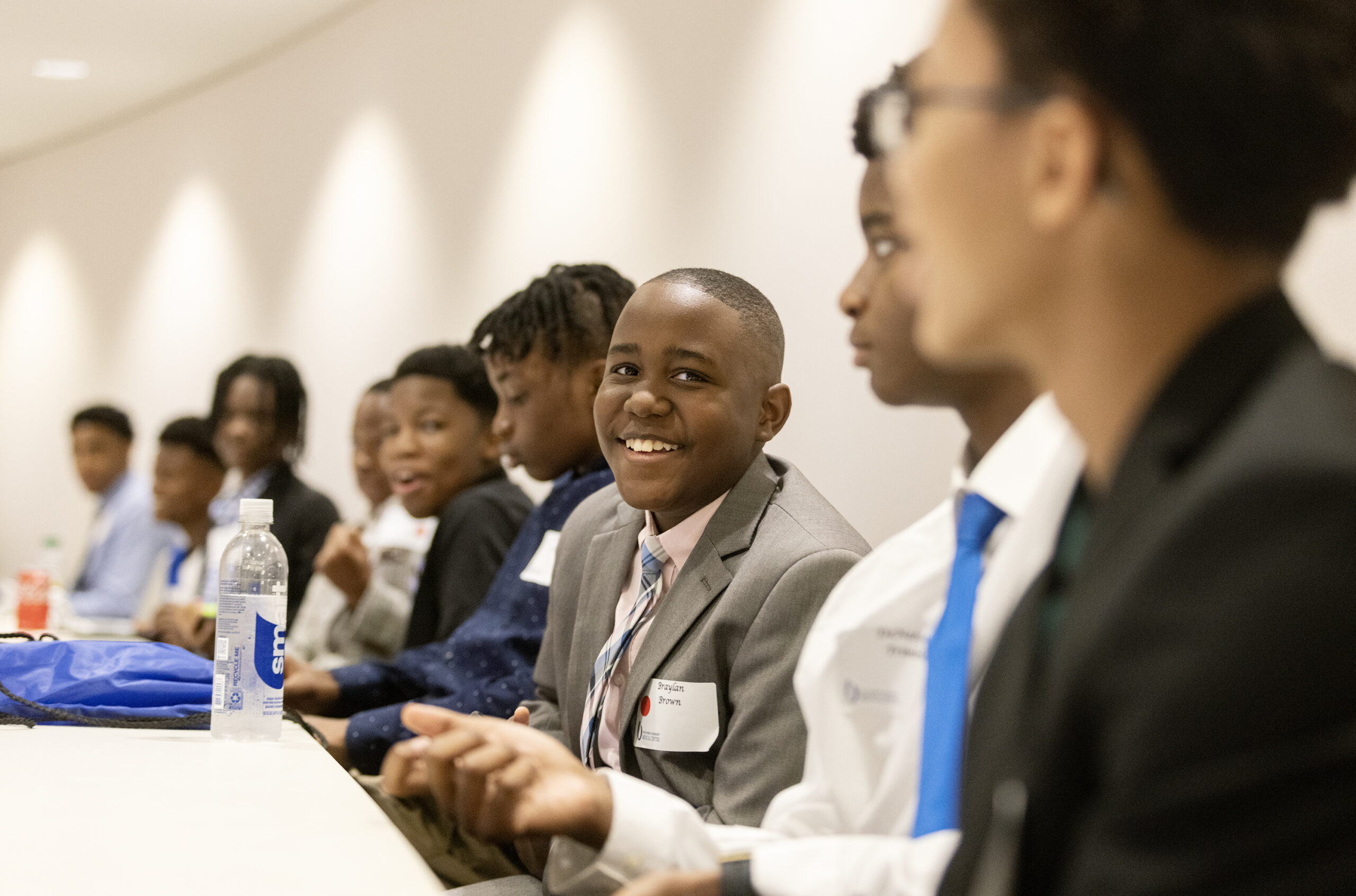







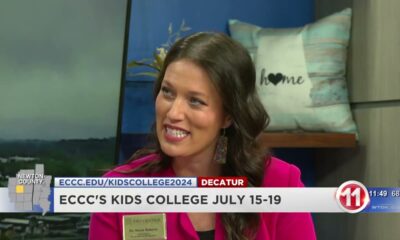



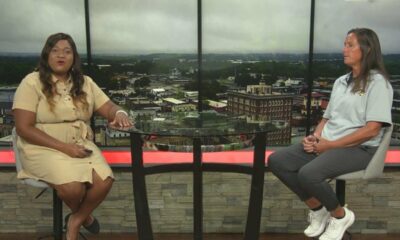



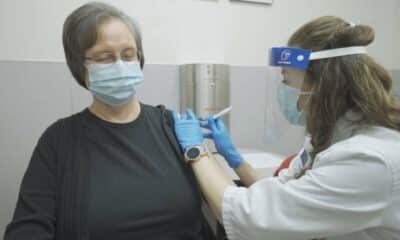













![HIGH SCHOOL SOFTBALL: Vancleave @ East Central (5/9/2024) [5A Playoffs, South State]](https://www.biloxinewsevents.com/wp-content/uploads/2024/05/1715460379_maxresdefault-80x80.jpg)








